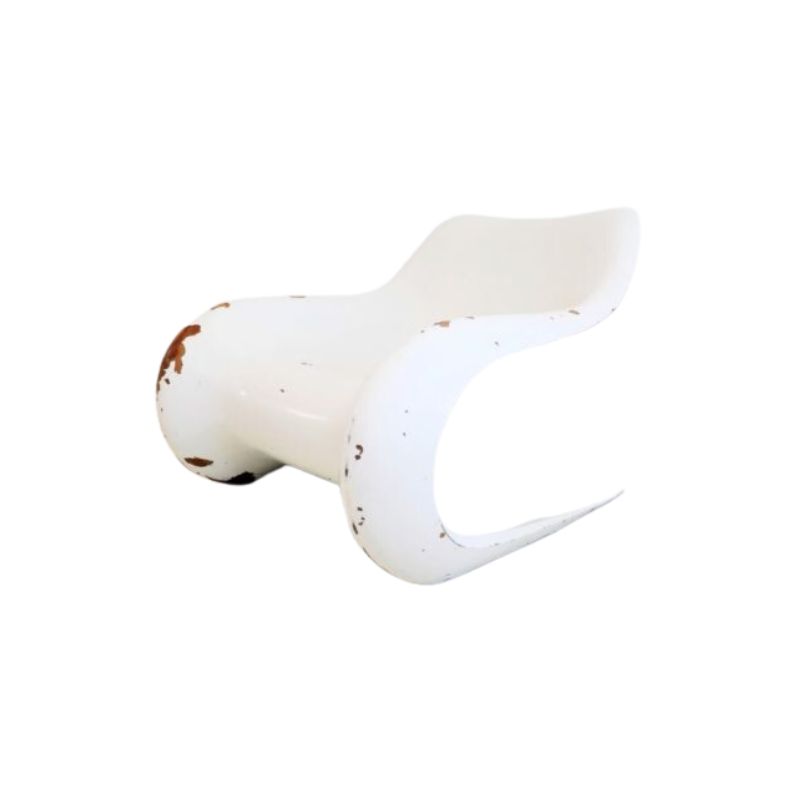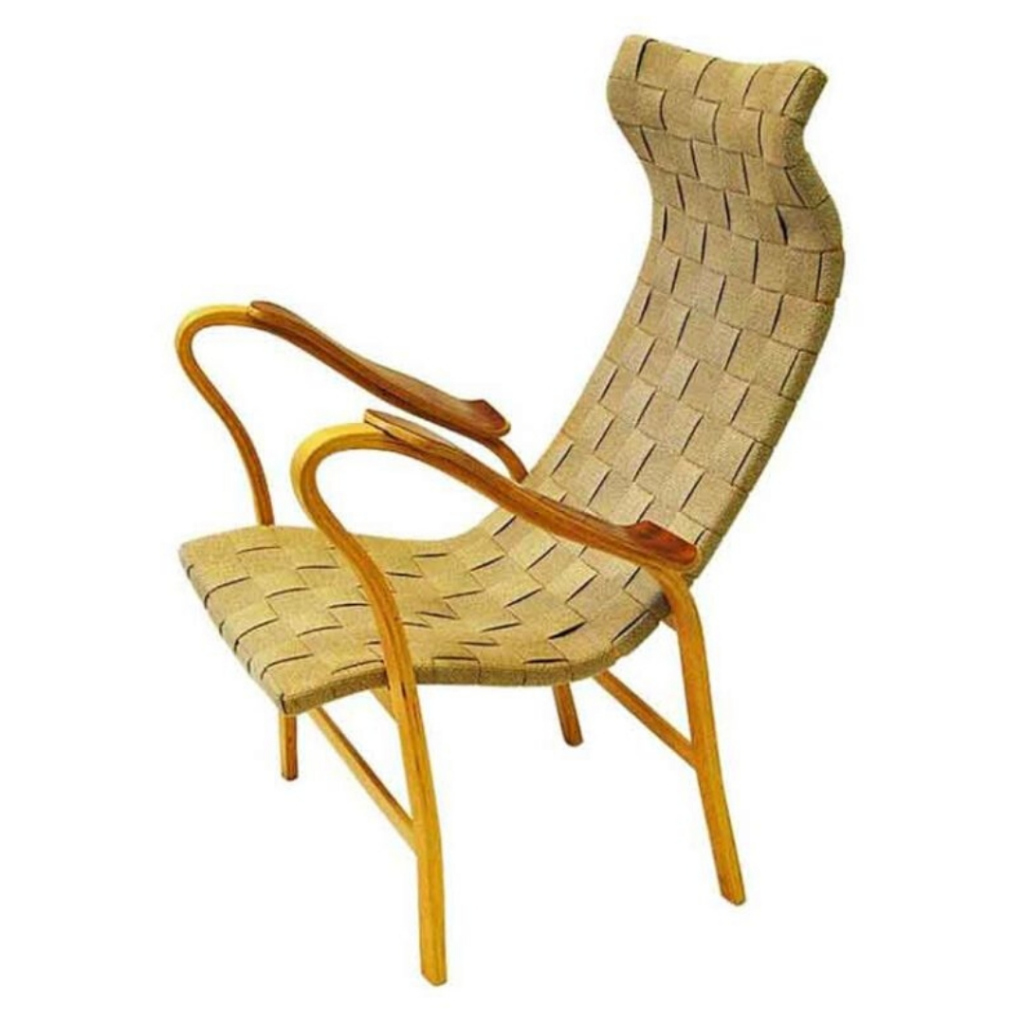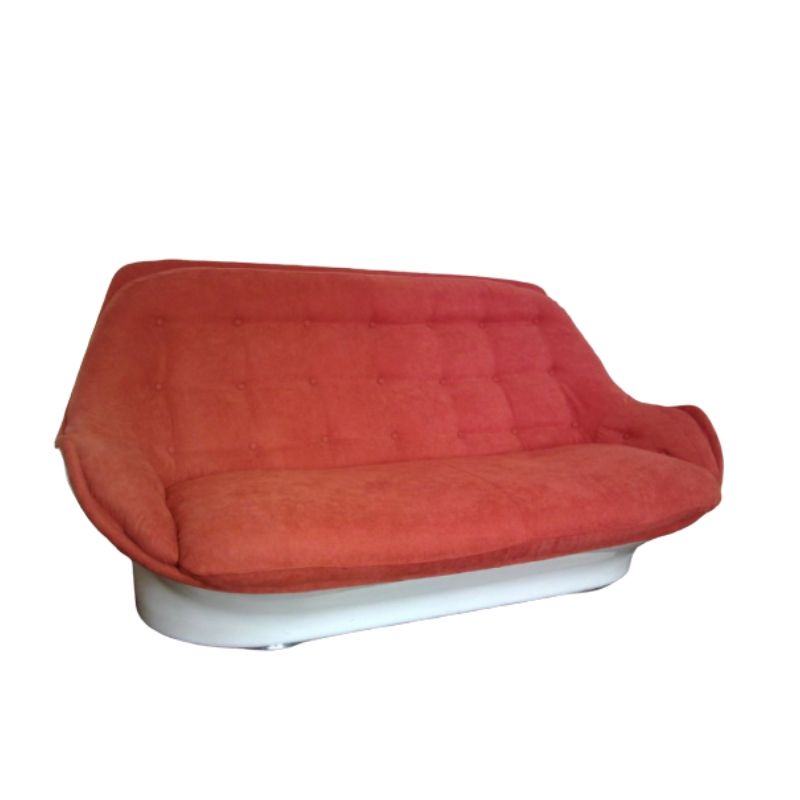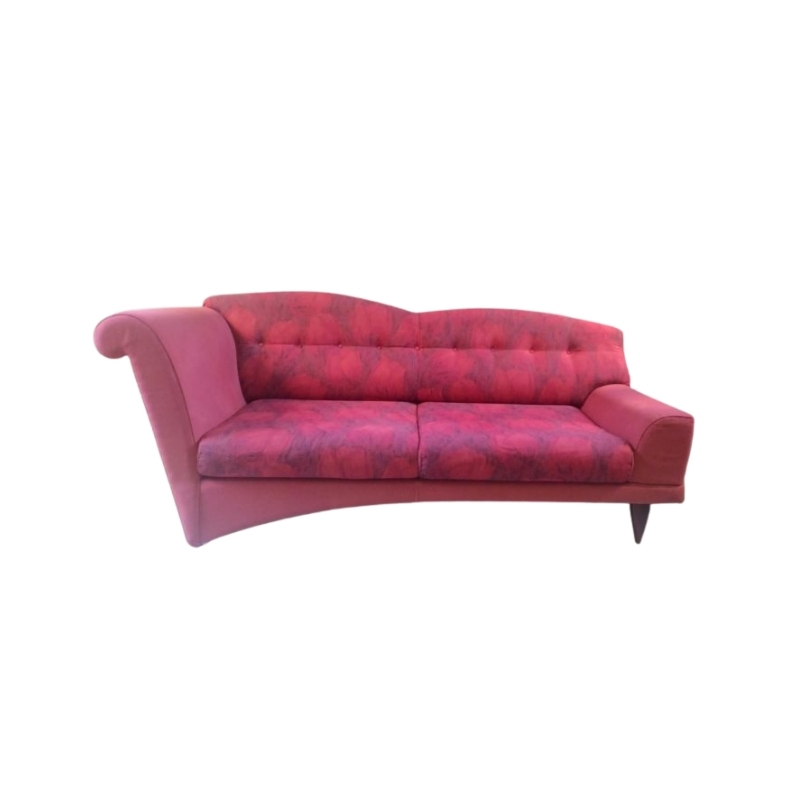Yes, if you look at the third photo. You will see "wing fasteners" (there has to be a technical term for that) that have one screw. The screw fastens to the top and the wings attach to the legs. Very easy to disassemble. Kind of reminds me of the build of Jens Risom tables.
I'm not a huge fan of the exposed hex bolts, but this table is lovely.
Picked up a pair of newer Eames aluminum side chairs in mint condition. Seller insisted they were reproductions. When I got there and asked her how old the chairs were, she managed to flip the chairs over and point out the manufacture date on the labels.
Somethjng that still keeps me wondering is the base. Typically the fixed base on these chairs has a post that stops at the 5-star base. However, this pair has posts that go farther down, similar to the tilting base. Anyone had any info?

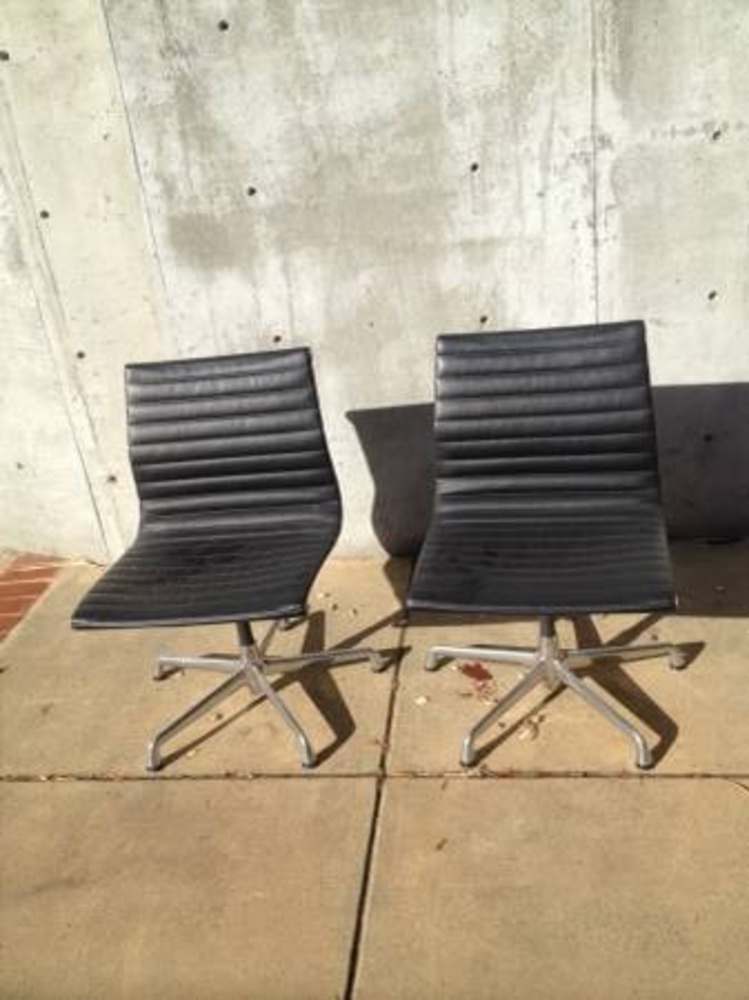
Today I got a pair of Cesca chairs for $5 each. I have come across some decent Italian made copies in the past, but these are the first I have ever found with the Knoll and Gavina tags on the bottom. The rattan seats and backs are hand woven (not made from machine woven sheets held in place with a spline, which is how all the reproductions seem to have been done).
This image shows an area where some of the edge banding is missing from my Knoll/Gavina Cesca chairs, showing the holes used for the hand weaving, and that there is no slot for a wedge style spline, as used with machine woven rattan sheets.
The current Knoll Cesca chairs being sold by places like DWR appear to be the same hand weave, so my best guess is that any Cesca chair sold through Knoll would have had the hand woven seat. The hand weaving would also account in part for the high price of the Knoll chairs. My chairs have the 745 Fifth Avenue Knoll label.
SDR- I saw some vague instructions for this type of weave in a book, but Spanky probably has a more clear idea than I of how it is done.
From what I saw in the book, it looked like the strip is held down by those little folded pieces, which are just inserted into the hole (with a bit of glue perhaps?). I do not think they weave from one hole to the next, and in fact, they can't do that with the backrest, because the holes drilled in the backrest do not go all the way through the wood. I assume some small wooden dowel pins might also be used to hold the cane tight inside the holes.
I guess the short answer is, I don't actually know.
picked up this little gem today.
george nelson pedestal low side table.
it seems to have been at a state university orginaly since it has a property tag. I am assuming it had a white HM medalion, which is missing, as that is when UGA, Valdosta and all of the other state schools with herman miller contracts seem to have had this stuff which prob means this might had been fishd out of a dumpter.
Its missing it glides, does anyone know where i can get replacements besides HM since there is no local dealers anywhere near me or would these work?
http://www.ebay.com/itm/EAMES-HERMAN-MILLER-4-DOMES-OF-SILENCE-GLIDES-EI...
SDR, you're right, the binder cane around the edge of a hand-caned seat is held in place by a strip of regular cane that goes up through each hole from the back, over the binder cane, then back down the hole and over to the next one from underneath.
Not sure how the back would be done other than how you postulated, tchp.
This site has some great photos comparing the real thing to a fake. But nothing about how the backs are done on the real ones.
http://www.f-farchitects.com/posts/the-real-deal
Regarding the Cesca chairs, I should probably have noted that when the seats are re-done on these original hand woven Knoll versions, it is apparently not uncommon for the chairs to be modified so that the seats can be done with pre-made rattan sheets and a spline, rather than by hand weaving. "The Caner's Handbook" that is so often cited here includes instructions for how to do this modification. So, it could be possible to find a Knoll/Gavina chair that has a splined seat, and for it to still be genuine.
But, the underside of the seat should still show the original drill holes that were used for hand weaving.
Had my most productive day ever today. Went to go pick up a walnut daybed and a Kai Kristiansen small sideboard (#41) for Feldballes Mobelfabrik, which also came with a similar smaller cabinet from the wall unit series that sat on top of the sideboard.
The seller noted before I arrived that he also had a Danish dining table and chairs that I might be interested in. The table is an very large teak draw-leaf (60x41" closed, 108" long opened). And then we walked around the corner and I saw the four Moller 75s. Although one of the legs of one chair was snapped cleanly in half, the price for the whole set was too good to pass up. I'll have a chance to do a dowel repair similar to tchp's recent Round Chair, except mine will be repairing a wood leg break rather than a dowel joint break.
I'll be making ID threads with additional photos for the daybed and dining table.
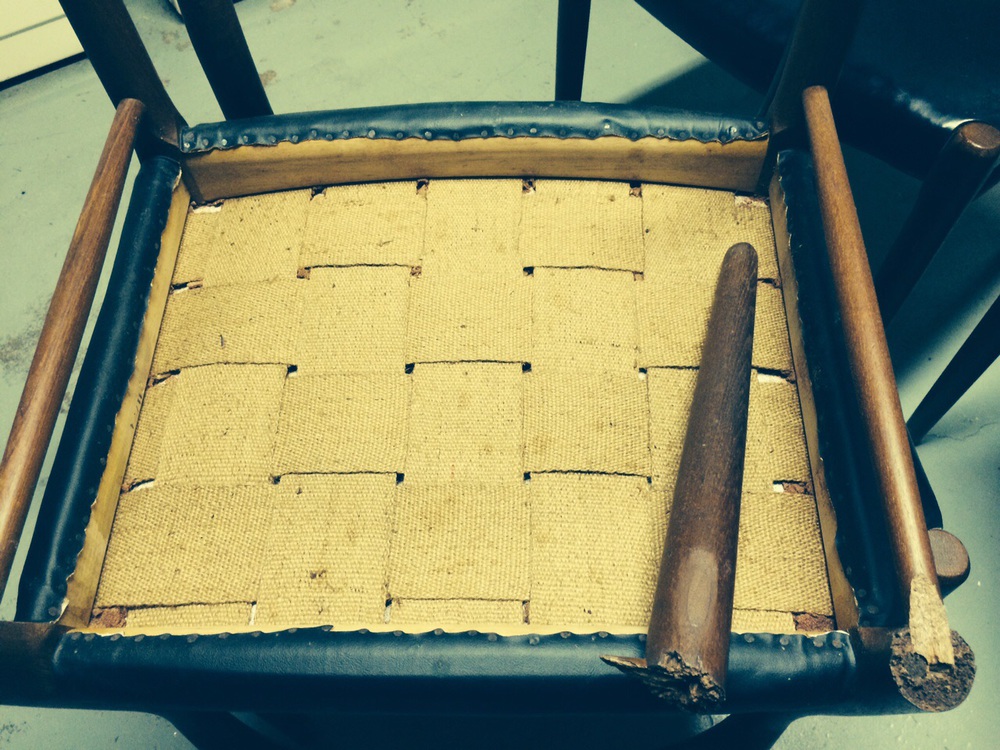
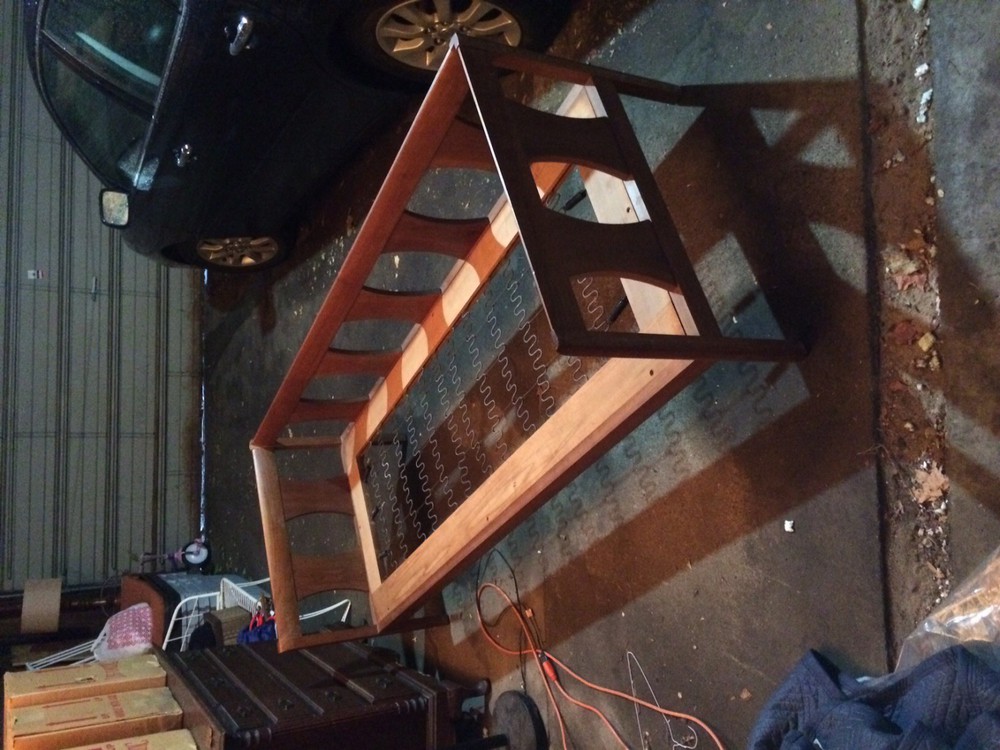
That is one ugly break. I wonder if this would be best fixed with 5 long but thin pins near the perimeter of the leg. Perhaps the pins could even be threaded steel rod of a narrow diameter (1/8" maybe) and epoxied in.
It is not something I've ever tried, but I've often thought it would be better at distributing forces across the break than a larger dowel because the small long pins would be distributed across the whole area and reach far up and down into the leg. (I imagine it as analogous to many stitches holding a seam together versus one large knot which just rips the fabric with any strain)
Perfect thinking, Leif, I think. I'm fond of repeating something I read in high school, describing what early Rolls Royce engineers learned about fastening: many smaller bolts or rivets were more secure than a few large ones, in the typical instance.
In this case, a ring of rods near the perimeter will far better resist bending of the leg than that single central dowel.
A drilling jig can be made that will permit the perfect duplication of a hole pattern in both halves of the broken leg.
thanks for the thoughts, leif and SDR.
It may be difficult to see in the photo, but there is already a dowel embedded in the break line, offset for some reason. Since the break is right below the stretcher, far from any original joint, I think someone attempted a repair in the past (with a woefully undersized dowel).
I'll probably run a test or two on a scrap leg from a damaged chair before trying anything on this guy.
If you need any help, please contact us at – info@designaddict.com






